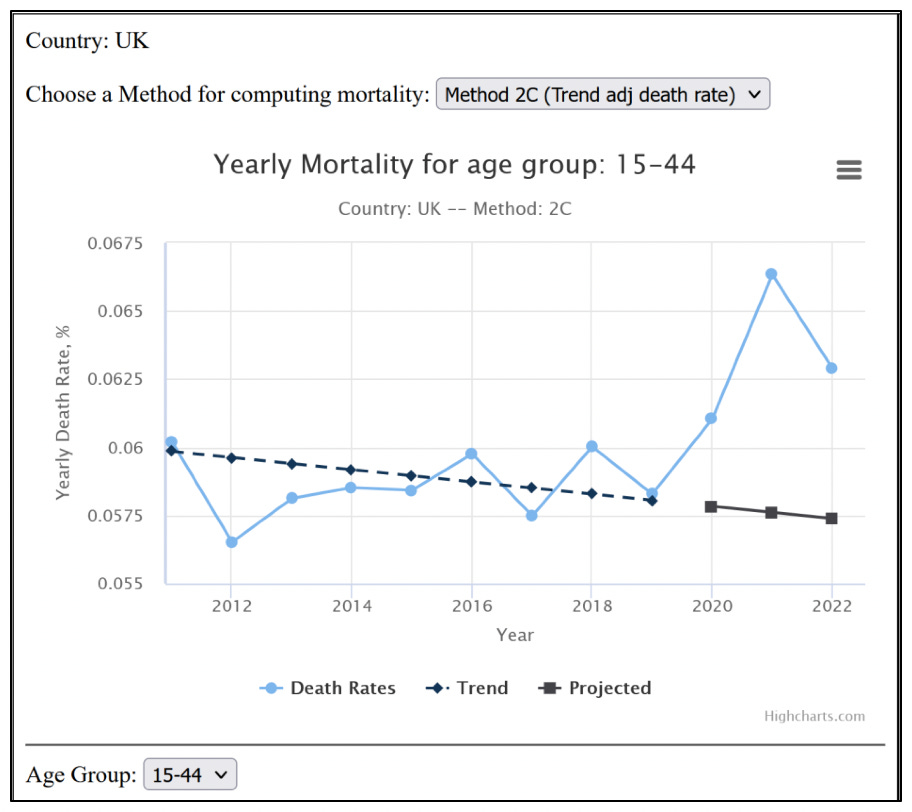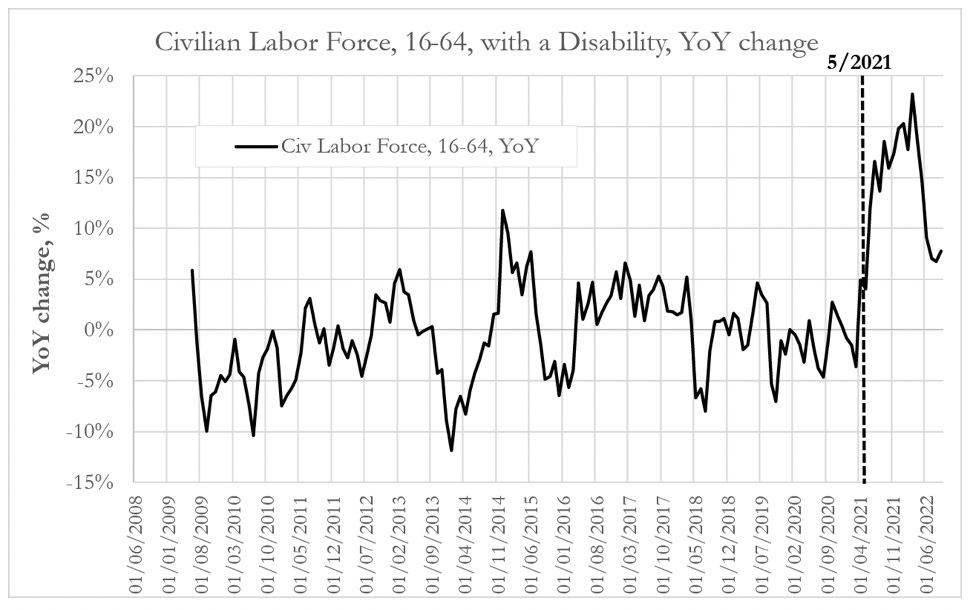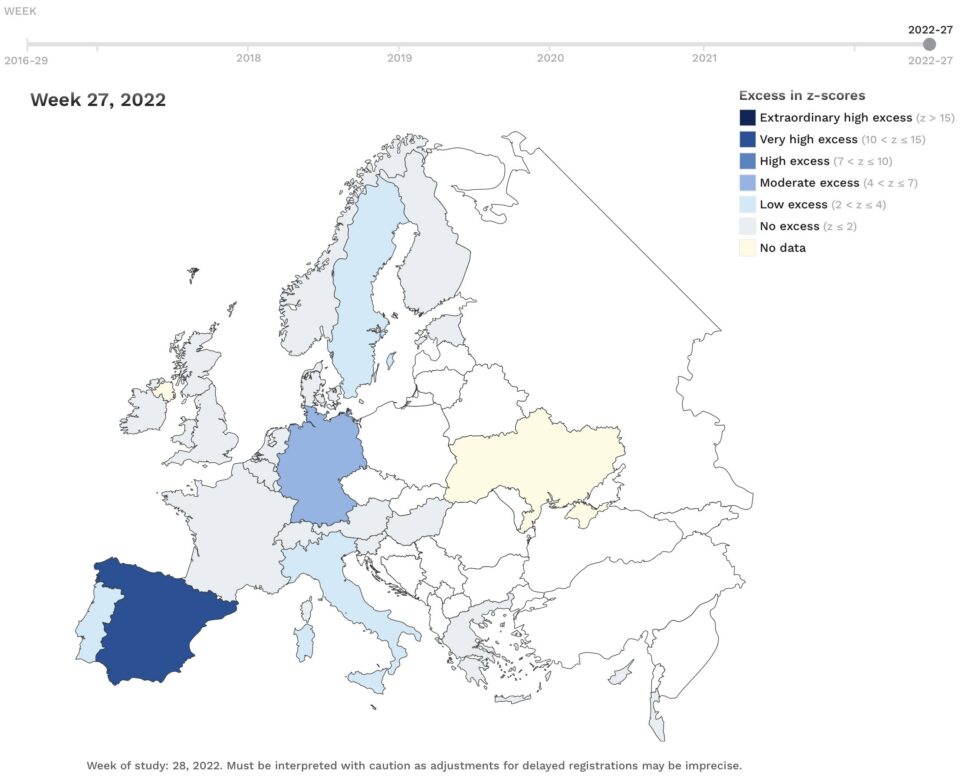A recent post by the Unity Project, “The Dilemma of the Unvaccinated”, inspired us at Phinance Technologies – humanity projects to name this post “The Dilemma of the Vaccinated”.
- Vaccine damage?
After analyzing the trends in excess mortality and disabilities post Covid-19 vaccination, we became alarmed. It looked as though our original concerns about the rapid development process of a vaccine based on a new experimental technology, which was then used to inoculate the majority of the population, had come to fruition.
The earliest smoking gun was the accumulation of deaths and injuries in the US VAERS database and equivalent EudraVigilance database for Europe. Since the vaccines were rolled out in early 2021, these databases have started showing abnormal numbers of deaths and injury associated with the new vaccines. These monitoring systems are designed to provide early warning signals for any toxicity problems, but adverse reactions are thought to be severely under-reported. These databases also do not prove causation.
Sucharit Bhakdi and co-workers show compelling evidence of causation from the injection to rapid distribution of the vaccine across the body through the bloodstream, widespread expression of the spike protein, and then autoimmune-like inflammation and organ damage. They identify the pathways towards common blood clotting-related adverse events in the vaccine monitoring databases such as strokes, heart attacks and lung embolisms.
The question that now remains is to quantify the extent of the damage so far. Although there is increased recognition of the more immediate damage (such as myocarditis), we have serious concerns about the ongoing excess mortality we are observing, and morbidity trends in the longer term, such as neurological disorders, cancers and auto-immune disorders. For this reason, we decided to launch the V-damage project to measure and monitor this phenomenon. More details on the project, its aims and initial findings are included below. However, after almost two years of trying to communicate our concerns, we are learning that admitting to a mistake in judgement on such an impactful policy is very difficult. The majority of individuals and their institutions will have strong resistance to a “mea culpa” moment, and this brings us first to the dilemma of the vaccinated.
- The dilemma of the vaccinated
If our concerns about what is causes the excess mortality and morbidity are right, vaccinated individuals (the majority of the population!) will be confronted with a dilemma: Either they A) face reality and go through the phases of grief associated with such realisations or; B) try to ignore reality and hope for the best. Let’s expand on the two options of the dilemma:
Option A.
This is the “oh my god” option. Individuals who take this path will eventually come to regret having been vaccinated. Most of them will likely be lucky and only have minor effects (or none) from the vaccine, but they may have friends and family with health problems that have been caused or exacerbated by the vaccines, and they realise that they will have to pay more taxes due to increased disabilities at a societal level.
However, with this acceptance comes the hope of ameliorating this problem. More voices speaking out will lead to better funding and less censorship of the doctors and scientists who are trying to research the vaccine damage and develop treatments to mitigate it.
Option B.
This is the “see no evil, hear no evil” option. It is the status quo, the comfort zone for most vaccinated individuals. They prefer to forget that they took the shot. Like the rest of the pandemic, for them it is in the past. They felt well at the time, so they see no reason to regret their decision now.
However, if the majority take this option, the scientists continue to be underfunded in researching the long-term impacts of the vaccines, and if the day comes when a loved one develops an unexpected condition, the medical establishment will be confounded. The doctors will be treating the symptoms without understanding the real cause, and perhaps use treatments that are ineffective. But what will the Option B individuals think of these unusual conditions and the difficulty in treating them? No-one knows, life sometimes throws us lemons!
At Phinance Technologies, we decided to use our research skills to help individuals and institutions to recognise this dilemma so that then they can make decisions and allocate resources to reduce or manage the vaccine damage.
- Humanity Project
Our ethos is always to be as close as possible to reality. We are aware as this is extremely difficult as everyone has their own biases and prejudices (including us). We have a research process that is data driven and goes through several iterations of analysis and questions asked until we get to a point where we have an understanding of the phenomenon, the right question to ask and the limitations of our analysis (either due to data or methodology).
Excess Deaths
When we started investigating excess mortality, we used the most common measure of excess deaths that is based upon measuring current deaths relative to a baseline that usually corresponds to 3 to 5 years of average deaths in previous years. We quickly came to the realisation that this method is inadequate as it produces biases when the population in given age groups changes over time. This is most noticeable for older age cohorts which have been seeing their numbers grow rapidly over the last decade, and younger age groups that have been decreasing (in most developed countries and some emerging countries) due to fertility rates being below replacement levels. Consequently, we developed a methodology that is based upon measuring excess death rates which adjusts for population numbers. Our reports on these methodologies to measure excess deaths are published on our website for public consultation.
Once the methodology was established, we started investigating excess deaths for Europe, the UK and the USA, using total mortality from official sources. We investigate excess mortality using weekly, quarterly and yearly data that illustrate different aspects of the phenomenon. In our analysis we try not to impose our views as we believe that the data is self-explanatory (see Figure 1) and each one of us needs to interpret what one is observing. A broad observation for looking at the totality of the data is that there was a general trend of increased excess mortality once the Covid-19 vaccinations were introduced. Mortality is due to different causes, but a systematic increase in excess mortality is difficult to justify from anything but the introduction of a systematic external factor (such as mass inoculations of an experimental biological product). Additionally, excess mortality seems to be phased from older to younger age groups, as the vaccinations for the different age groups were rolled out. When looking at weekly data, we can almost guess the start of the vaccination by looking at the excess mortality alone.
Figure 1 – Yearly excess mortality for 15-44 in the UK
Disabilities
The impact of the vaccines in not only shown in excess deaths but also in increases in disabilities. For estimating this increase, we investigated trends in US disabilities. Again, we found an increase starting in early 2021 that this coincides with the vaccine rollout, as we can observe from Figure 2.
Figure 2 – Year-on-year change in disabilities in the US civilian labor force
V-Damage Project
All the evidence that we observed led us to the conclusion that the mass inoculations have a human cost that we need to assess, with adequate resource allocation, in order to prepare to manage in future years. We structured the V-Damage project to analyse different data sources that provide auxiliary information about the phenomenon, such as the VAERS and V-Safe databases, as well as insurance company data. First the human cost will be investigated, and in step 2, we will estimate the economic cost (see Figure 3).
 3 – Layout of the V-Damage project
3 – Layout of the V-Damage project
The task at hand is enormous and should not be done by us, but instead by the regulators and authorities that we entrusted with being the gatekeepers of such complex processes. With our work, we hope that the vaccinated awaken to the realization that they are faced with a dilemma. For now, most are choosing Option B above. We hope that many individuals that were coerced in taking the inoculations without informed consent will realize that Option A will increase their chances of not only improving their lives (if they are unlucky to be affected by the inoculations), but also the health of society as a whole.
Source: Robert Malone
Map: Excess mortality in Europe according to EuroMOMO (European Daily Mortality Monitoring System) at July 10, 2022.
